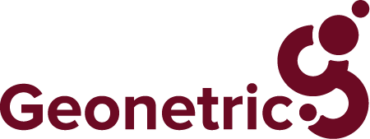Using Atomic Design for Your Healthcare Website
Meet your new secret weapon to effortlessly keep your website up-to-date.
When thinking about redesigning their organization’s website, healthcare marketers often end up focusing on individual pages.
But what if we zoomed out and took a look at the bigger picture? What if we considered healthcare websites not just as a collection of pages but a cohesive, scalable user experience that can grow and evolve as your organization does?
The key to this mindset shift is building a comprehensive design system of reusable components, guidelines, and assets that make up your website’s visual identity. But that design system won’t just appear out of thin air — it requires structure, planning, and organization. That’s where the concept of Atomic Design comes into play.
Atomic Design is a structured methodology that breaks down a website into smaller, reusable components helping healthcare marketers and web designers build scalable, consistent websites that can easily adapt to new content and features.
Let’s explore how Atomic Design works, why it’s a smart approach for healthcare organizations, and how you can put it into practice using the VitalSite® content management system.
What is Atomic Design?
Atomic Design is a method for creating design systems where instead of treating a website as a collection of individual pages, you’re encouraged to think of a website as a system made up of smaller building blocks. This allows for greater flexibility, consistency, and scalability.
Atomic Design breaks down into five key levels:
- Atoms
- Molecules
- Organisms
- Templates
- Pages
Each level builds upon the previous one, creating a system where components can be reused, modified, and scaled without losing design integrity.
Why Atomic Design works for healthcare
Atomic Design provides several key benefits for healthcare marketers, including:
- Consistency: Ensures that the design, functionality, and user experience remain uniform across all pages and devices.
- Scalability: Allows new service lines, providers, and locations to be added without redesigning the entire site or starting a page from scratch.
- Efficiency: Saves time and resources by reusing existing components and templates.
- Flexibility: Makes it easier to adjust branding or functionality without disrupting the overall design.
Applying Atomic Design to your healthcare website
Healthcare websites are a complex collection of service lines, providers, locations, and patient resources that must provide a seamless user experience while remaining accurate and up-to-date.
Atomic Design helps healthcare marketers simplify this complexity by creating a structured design system that allows for consistent, flexible updates.
Let’s take a look at each building block of this design system, and how they come into play for your organization.
1. Atoms
Atoms are the smallest elements of your website — things like buttons, typography, color palettes, icons, and input fields. On your organization’s website, atoms might include:
- A “Schedule Appointment” button
- Icons for service line categories
- Text fields for searching providers or locations
- Color schemes that align with your organization’s brand
These elements are designed to be reusable and consistent across the site. For example, using the same button style for all calls to action helps patients instantly recognize how to take action.
2. Molecules
Molecules are combinations of atoms that work together to create functional elements. On a healthcare website, this might look like:
- A search bar that combines an input field, a search icon, and placeholder text
- A login form with email and password fields and a “Sign In” button
- A location finder that includes a dropdown, map icon, and submit button
Molecules help create consistency and make it easier for users to interact with your site. For example, every search bar across your site should look and function the same, creating a predictable user experience.
3. Organisms
Organisms are more complex structures made up of molecules and atoms that get you one step closer to the things users will actually see and interact with on your site. These are more complex but remain modular, including:
- A navigation bar
- A product card
- The website footer
By organizing molecules into organisms, you’ll get elements that can be scaled and reused across different parts of the site.
4. Templates
Templates define the structure of your website’s pages. They act as blueprints that determine the placement of content, navigation, and key elements — you may even consider them the “skeleton” that gives your website shape.
Healthcare website templates might include:
- A service line template with a consistent header, content section, and calls to action
- A provider profile template with space for a headshot, biography, specialties, and scheduling button
- A blog post template with a fixed layout for the title, content, and related articles
Templates ensure consistency across the site while allowing for easy updates and adjustments. When new services or content are needed, you can plug them into your existing templates without redesigning the page or starting from scratch.
5. Pages
Pages are the final product — where content and design come together to create a complete user experience for your patients. For healthcare websites, pages can include:
- The homepage
- Service line pages
- Provider profiles
- Appointment scheduling pages
By using the Atomic Design structure, these pages remain consistent and easy for you and your team to maintain. Updating a single atom (such as a button style) will automatically update it across every page where that button appears, saving time and maintaining brand consistency.
Atomic Design & VitalSite
Our VitalSite content management system is built with Atomic Design in mind, with features like flexible page layouts, reusable content panels, and dynamic SmartPanels to make maintaining your website a breeze.
No matter what your marketing team’s size or budget looks like, VitalSite and Atomic Design can be used together to save time and money to keep your website current.
Learn more about VitalSite and how it can transform the way your organization maintains its website, or read this client spotlight to learn how Rutland Regional Medical Center uses VitalSite’s flexible features and intuitive authoring to ensure its site is a valuable resource for patients.
If you’d like to see firsthand how Atomic Design and VitalSite can benefit your organization, contact our team today for a free demo!
Your prescription for digital healthcare marketing knowledge
From staying on top of changes in SEO to learning the latest trends in mobile optimization, Geonetric delivers the information you need directly to your inbox.
Related Articles
You might also enjoy these related articles that dive deeper into the topic:



